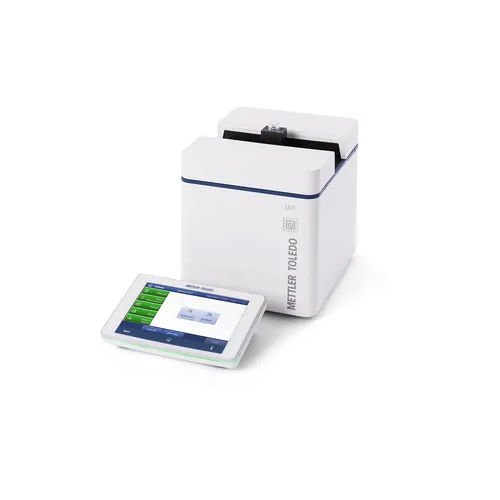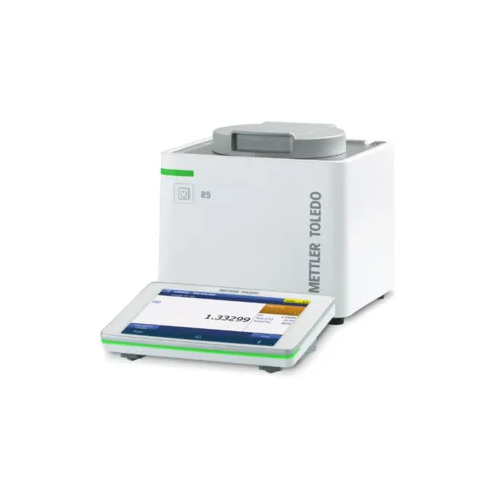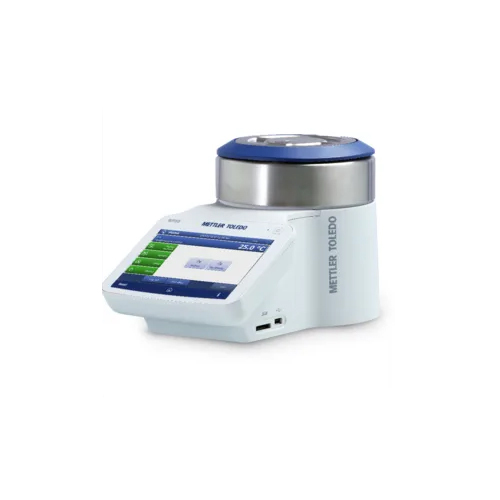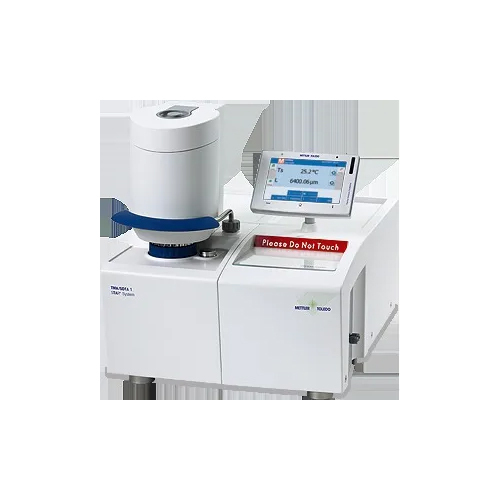Spectrophotometer UV7
Product Details:
Product Description
A high-performance laboratory tool called the Spectrophotometer UV7 is used to gauge how well samples in the ultraviolet (UV) and visible (VIS) portions of the electromagnetic spectrum absorb and transmit light. It is frequently employed in biotech, pharmaceutical, and life science applications such as enzyme kinetics research, protein measurement, and DNA analysis.
A tungsten/halogen light and a deuterium lamp are both included in the UV7 spectrophotometer's setup for visible region measurements and UV measurements, respectively. Its spectral bandwidth is 1.8 nm, and its photometric range is -0.3 to 3.0 Absorbance Units (AU). Its wavelength range is 190-1100 nm. The device can test protein, DNA, and RNA concentrations as well as purity ratios like A260/A280 and A260/A230.
The UV7 spectrophotometer has a user-friendly interface with a sizable colour touchscreen display and menus that are simple to operate. It features software for data analysis and acquisition integrated in, with a variety of calculating modes like concentration, purity, and kinetics. The equipment is a practical and effective tool for normal laboratory analysis because it may save up to 300 procedures and 500 outcomes.
The UV7 spectrophotometer's high level of precision and reproducibility is one of its main features. With a baseline stability of less than 0.002 Abs/hour and a stray light level of less than 0.1% at 220 nm, the instrument is built to offer accurate and trustworthy readings. It is the perfect instrument for research applications where precision and accuracy are essential thanks to these capabilities.
The UV7 spectrophotometer, in general, is a strong and adaptable laboratory tool that offers a variety of features and capabilities for determining the absorbance and transmittance of light in the UV and VIS sections of the electromagnetic spectrum. It is a preferred option for researchers and professionals in the life science, pharmaceutical, and biotech industries thanks to its high level of accuracy, reproducibility, and user-friendly interface.
Product Specifications :
|
Wavelength Range (nm) |
190 nm - 1,100 nm |
|
Photometric accuracy (K2Cr2O7) |
+0.005 A |
|
Wavelength accuracy |
+0.5 nm |
|
Resolution (Toluene in hexane) |
>1.9 |
|
Stray light (KCl, 198nm) |
>2.3 |
|
Options |
CuvetteChanger; Fingerprint Reader; Cuvettes; FillPalMini; LinSet; LabX PC Software; Printer; CertiRef; Barcode Reader |
|
Shortcuts per user |
24 |
|
Max. number of methods |
100 |
|
Pharmacopeia compliant |
Yes |
|
Kinetic Measurements |
Yes |
|
User Identification |
Yes |
|
Micro-volume measurements |
No |
|
Bio applications |
No |
|
Languages |
English; Italian; French; Russian; Portuguese; Chinese; German; Spanish; Japanese |
|
Minimal Scan time |
1 s |
|
Display |
7 inch QVGA Color TFT touch sensitive screen |
|
Displayed Resolution |
800x400 |
|
Dimensions (HxWxD) |
8.98 in x 8.19 in x 10.04 in (228 mm x 208 mm x 255 mm) |
|
Weight (incl. Terminal) |
6.4 kg |
|
Material Number(s) |
30254726 |
FAQ
1. What exactly is a UV7 Spectrophotometer?
Ans - In order to measure light intensity in the ultraviolet region, spectrophotometers of the type UV7 are utilised. It can measure the brightness of light at a range of wavelengths between 190 and 1100 nanometers.
2. What kinds of samples can a Spectrophotometer UV7 measure?
Ans - The absorbance and transmittance of a variety of materials, including proteins, polymers, and chemical molecules, can be measured using a spectrophotometer UV7.
3. Spectrophotometer UV7: How Does It Operate?
Ans - A light source is used to illuminate a sample in a spectrophotometer UV7, and the amount of light absorbed by or transmitted through the sample is then measured. The sample's absorbance or transmittance is then determined using this data.
4. What benefits come with utilising a UV7 Spectrophotometer?
Ans - The usage of a Spectrophotometer UV7 has several benefits, including the capacity to test samples' absorbance and transmittance over a broad spectrum of ultraviolet wavelengths, accuracy and precision, and ease of use.
5. What are the UV7 Spectrophotometer's limitations?
Ans - The inability to measure in the visible light spectrum as well as the Spectrophotometer UV7's reduced accuracy at higher wavelength ranges are some of its drawbacks. Additionally, measuring very small samples is not a good use for it.

Price:
- 50
- 100
- 200
- 250
- 500
- 1000+
Other Products in 'Analytical Instruments' category
 |
Mettler-Toledo India Private Limited
All Rights Reserved.(Terms of Use) Developed and Managed by Infocom Network Private Limited. |
 English
English Spanish
Spanish French
French German
German Italian
Italian Chinese (Simplified)
Chinese (Simplified) Japanese
Japanese Korean
Korean Arabic
Arabic Portuguese
Portuguese






